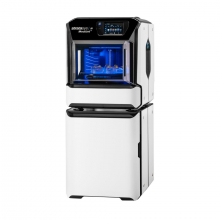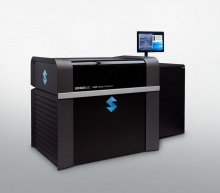Better understanding, treatment and patient care with 3D printing
Brain lesions and tumors are generally identified through magnetic resonance imaging (MRI) or computed tomography (CT) scans, but these modalities may be limited in providing eloquent details related to these conditions. That’s why Dr. Darin Okuda, Director of Neuroinnovation at UT Southwestern, is utilizing 3D printing to reproduce brain lesions resulting from multiple sclerosis (MS), an autoimmune disease that causes neurodegeneration of the central nervous system and acute inflammatory attacks, and tumors caused by glioblastoma multiforme (GBM), an aggressive cancer that occurs in the spinal cord or brain.
The study of the physical 3D models has allowed Okuda and his team to appreciate the qualitative characteristics of disease that are not apparent in orthographic view.
With the use of 3D printing, Okuda and his team have been able to better understand brain lesions related to MS and tumor growth/regression which has led to greater insights into disease evolution as well as improving treatment and patient compliance and care.
“This may be the result of the impact of light coming into the model at different angles allowing for a deeper appreciation of the characteristics present. Our visual inspection of the physical models has also allowed us to develop new hypotheses that we have incorporated into our machine and deep learning systems,”
- Dr. Darin Okuda, Director of Neuroinnovation at UT Southwestern






